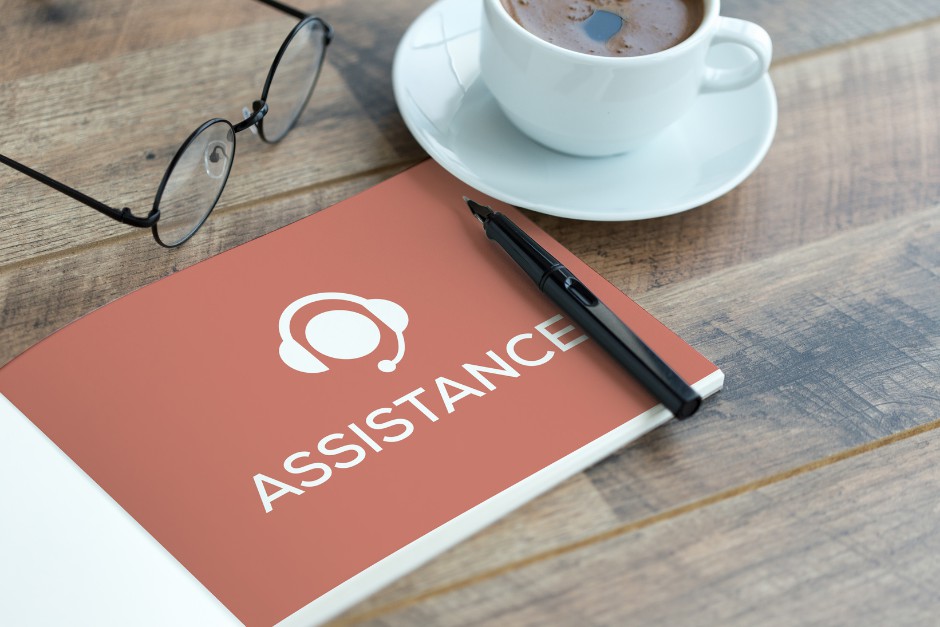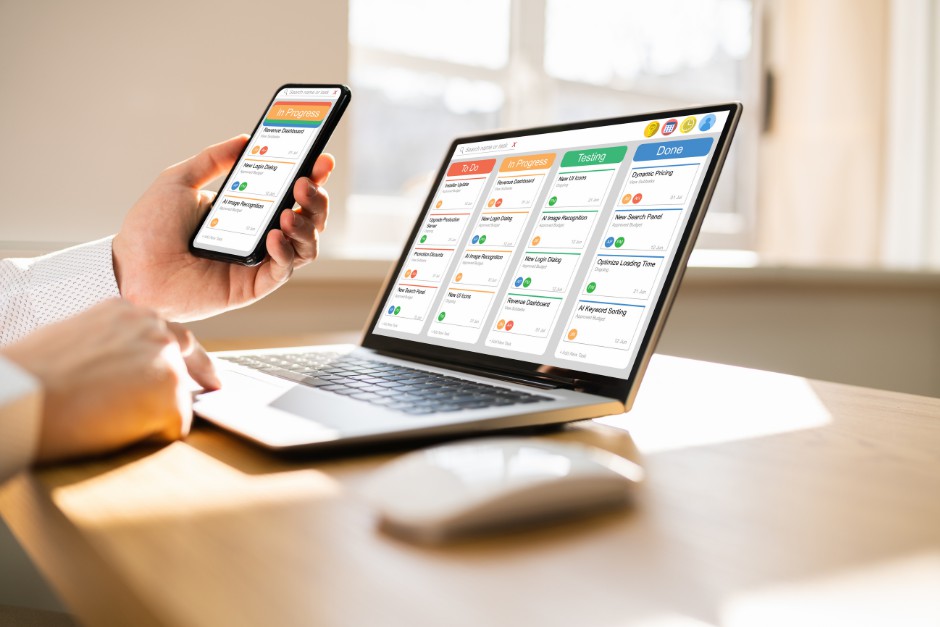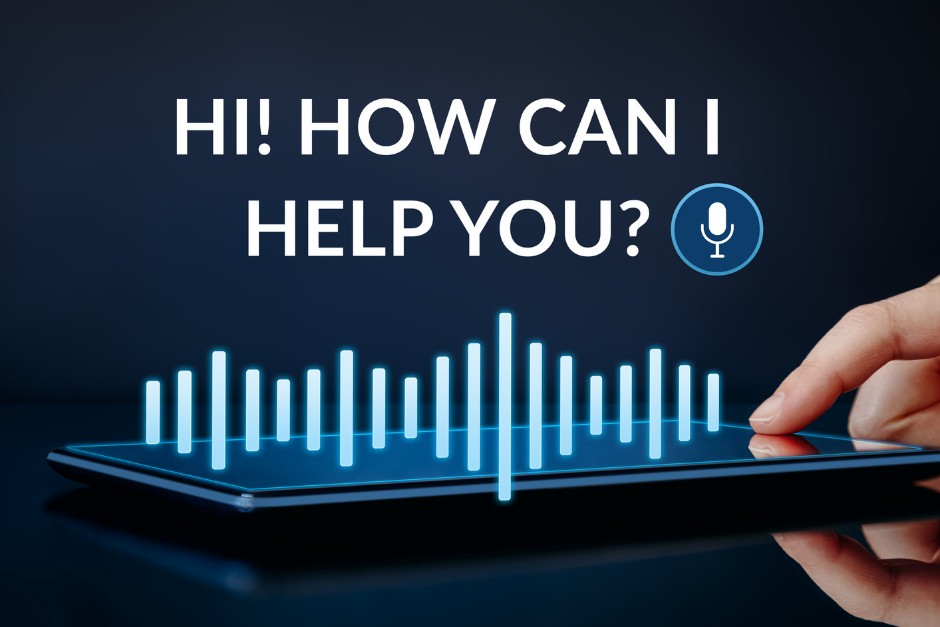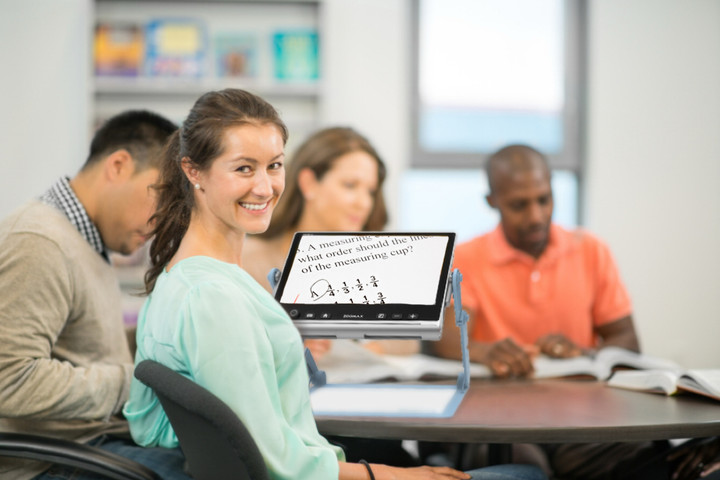How do visual aids improve the life of visually impaired people? To some extent, it builds a bridge between the world and people with visual impairments. These advanced tools can help individuals with low vision in every aspect of their lives. To be more specific, visual aids enrich lives by improving communication, learning, decision-making, creativity and more. They work like magic to make information more accessible and easy to understand, while also providing entertainment and safe support. In short, they are the all-rounders of life, enriching the daily lives of visually impaired people with images and visuals.

Improve Daily Life and Independence
Visual aids such as screen readers, voice assistants, digital magnifiers and smart navigation applications play an important role in the daily lives of the visually impaired, providing them with more autonomy and convenience. Let’s see some specific examples in the following:
Email helper
 Visual aids like screen magnifier software can enlarge fonts and images on the computer or mobile phone, making it easy for the visually impaired to read emails. In addition, there are specific email applications and assistive technologies that can read email content and convert text into speech to help users understand and respond to emails. For replying to emails, some software also supports voice commands, helping visually impaired people verbally type responses and making email communication easier. This feature particularly contributes to those with vision loss who still devote themselves to careers and need to check a lot of emails every day.
Visual aids like screen magnifier software can enlarge fonts and images on the computer or mobile phone, making it easy for the visually impaired to read emails. In addition, there are specific email applications and assistive technologies that can read email content and convert text into speech to help users understand and respond to emails. For replying to emails, some software also supports voice commands, helping visually impaired people verbally type responses and making email communication easier. This feature particularly contributes to those with vision loss who still devote themselves to careers and need to check a lot of emails every day.
Manage schedules
 Voice assistants such as Siri, Google Assistant, Alexa, and other voice intelligent assistant (AI assistant) can not only offer scheduling and calendar functions but also provide convenience for visually impaired people to create, edit, and review their schedules, set reminders, and more through voice input and voice feedback. In this case, people with low vision are able to live a regular life, which may increase their confidence in life independence. Also, with well-managed schedules, visually impaired individuals won’t forget their appointments with their eye doctors anymore.
Voice assistants such as Siri, Google Assistant, Alexa, and other voice intelligent assistant (AI assistant) can not only offer scheduling and calendar functions but also provide convenience for visually impaired people to create, edit, and review their schedules, set reminders, and more through voice input and voice feedback. In this case, people with low vision are able to live a regular life, which may increase their confidence in life independence. Also, with well-managed schedules, visually impaired individuals won’t forget their appointments with their eye doctors anymore.
Shopping easily
 Online platforms are being more accessible for people with vision impairments with the help of visual aids. For instance, visually impaired people can use screen readers and voice assistants to browse and shop online stores. These tools can read product descriptions and prices and can also help users through the purchase process, from selecting items to filling in payment information, making online shopping more convenient. Or if you still prefer going to a mall and enjoying your physical shopping time, a handheld video magnifier, such as Zoomax Luna 6, can come in handy.
Online platforms are being more accessible for people with vision impairments with the help of visual aids. For instance, visually impaired people can use screen readers and voice assistants to browse and shop online stores. These tools can read product descriptions and prices and can also help users through the purchase process, from selecting items to filling in payment information, making online shopping more convenient. Or if you still prefer going to a mall and enjoying your physical shopping time, a handheld video magnifier, such as Zoomax Luna 6, can come in handy.
Smart Navigation
 Smart navigation apps, such as VoiceOver (iOS) and TalkBack (Android), combine GPS technology and voice guidance to provide safe navigation services for the visually impaired. They guide users to their destinations and provide real-time route directions, allowing them to confidently walk around cities, use public transportation or explore new places. Meanwhile, smart navigation could be especially a useful aid for low vision people who also have guide dogs. With the assistance of guide dogs and smart navigation technology, individuals with vision loss can explore their surroundings successfully and safely when they’re hanging outside. See more about guide dogs and visual aids: Visual Independence: Guide Dogs and Visual Aids.
Smart navigation apps, such as VoiceOver (iOS) and TalkBack (Android), combine GPS technology and voice guidance to provide safe navigation services for the visually impaired. They guide users to their destinations and provide real-time route directions, allowing them to confidently walk around cities, use public transportation or explore new places. Meanwhile, smart navigation could be especially a useful aid for low vision people who also have guide dogs. With the assistance of guide dogs and smart navigation technology, individuals with vision loss can explore their surroundings successfully and safely when they’re hanging outside. See more about guide dogs and visual aids: Visual Independence: Guide Dogs and Visual Aids.
Reading
 Visual aids play a crucial role in assisting individuals with low vision in their daily reading activities. Since reading touches every aspect of life, vision problems can cause difficulties, but visual aids fill this gap. Visual aids like electronic magnifiers enable them to read printed books, newspapers, and magazines at any time, while screen magnifiers and screen readers allow them to easily access online resources and digital content, so they can get more content they’re interested in. These tools empower those with low vision with greater reading independence, enriching their knowledge and cultural engagement, ultimately enhancing their quality of life.
Visual aids play a crucial role in assisting individuals with low vision in their daily reading activities. Since reading touches every aspect of life, vision problems can cause difficulties, but visual aids fill this gap. Visual aids like electronic magnifiers enable them to read printed books, newspapers, and magazines at any time, while screen magnifiers and screen readers allow them to easily access online resources and digital content, so they can get more content they’re interested in. These tools empower those with low vision with greater reading independence, enriching their knowledge and cultural engagement, ultimately enhancing their quality of life.
Studying
 For those with visual impairments who are students or insist on self-learning, visual aids provide them with ways to obtain more online knowledge and resources. Electronic vision aid software such as JAWS (Job Access With Speech) and NVDA (NonVisual Desktop Access) can be used to read e-books, web pages and documents. They can convert text content into speech or present it in a Braille format to help visually impaired students learn at school or university. Additionally, some learning apps offer voice navigation and interactive features that enhance the educational experience. This is how visual aids are important to people with vision loss.
For those with visual impairments who are students or insist on self-learning, visual aids provide them with ways to obtain more online knowledge and resources. Electronic vision aid software such as JAWS (Job Access With Speech) and NVDA (NonVisual Desktop Access) can be used to read e-books, web pages and documents. They can convert text content into speech or present it in a Braille format to help visually impaired students learn at school or university. Additionally, some learning apps offer voice navigation and interactive features that enhance the educational experience. This is how visual aids are important to people with vision loss.
Increase Educational and Professional Opportunities
Particularly, visual aids help to build a world with more friendly learning and professional opportunities for visually impaired people, hence, they’re more available to communicate with the society and the whole world. Education and employment are often the foundation of social development. The help from visual aids on education and employment therefore becomes especially crucial.
 Visual aids are a means of improving equity in education and employment settings for individuals with low vision. They play a fundamental role in leveling the playing field and ensuring equal opportunities for everyone. And they are important tools in promoting equity for visually impaired people. They bridge accessibility gaps by providing equal access to information and resources, ensuring these individuals can fully participate in educational and professional settings.
Visual aids are a means of improving equity in education and employment settings for individuals with low vision. They play a fundamental role in leveling the playing field and ensuring equal opportunities for everyone. And they are important tools in promoting equity for visually impaired people. They bridge accessibility gaps by providing equal access to information and resources, ensuring these individuals can fully participate in educational and professional settings.
In studying environments, visual aids such as Braille materials, digital magnifiers, and screen readers make educational content accessible, thus creating an inclusive atmosphere. Furthermore, in educational context, they improve participation in classroom discussions, group projects, and extracurricular activities. Similarly, in workplaces, tools like electronic video magnifiers and specialized software enhance accessibility to digital documents and interfaces. These improvements result in more popular and accommodating environments where individuals with low vision can thrive.
Visual aids provide individuals with low vision the tools to achieve greater autonomy in their academic and professional endeavors. They enable them to navigate information and technology autonomously, fostering not only personal development but also enhancing their overall sense of well-being. Moreover, by removing barriers to information and technology, visual aids contribute to higher employment rates among people with poor vision. More job opportunities become available to people who have visual impairments, and they can pursue diverse careers across various industries.
Enrich Leisure and Social Interaction
Recreational life and social activities play a vital role in the lives of people with low vision. These activities not only bring them fun and emotional satisfaction but also help maintain their mental health. Especially given the increased life challenges they may face, recreational and social activities provide a valuable form of emotional support that can help reduce stress, anxiety and depression, and enhance emotional well-being. Additionally, entertainment can also promote social interaction, providing people with vision loss the opportunity to connect and interact. Through social interaction, they can develop social skills, expand their social circles, and build close relationships, thereby relieving the stress of vision loss.
 With the right assistive tools, visually impaired people are able to enjoy cultural activities such as concerts, theatres, museums, exhibitions and sports competitions without being restricted by visual impairment with friends and family. At the same time, social activities also mean a lot to career development. By participating in professional networking events, career sessions and social gatherings, people with visual impairments can establish professional relationships, obtain employment opportunities, and improve career prospects. Therefore, recreational life and social activities are not only a source of pleasure and fun, but also an important footstone of mental health, social interaction and career opportunities. If you’re interested in more types of entertainment for visually impaired people, please visit: The Best Activities for Visually Impaired to be Entertained.
With the right assistive tools, visually impaired people are able to enjoy cultural activities such as concerts, theatres, museums, exhibitions and sports competitions without being restricted by visual impairment with friends and family. At the same time, social activities also mean a lot to career development. By participating in professional networking events, career sessions and social gatherings, people with visual impairments can establish professional relationships, obtain employment opportunities, and improve career prospects. Therefore, recreational life and social activities are not only a source of pleasure and fun, but also an important footstone of mental health, social interaction and career opportunities. If you’re interested in more types of entertainment for visually impaired people, please visit: The Best Activities for Visually Impaired to be Entertained.

